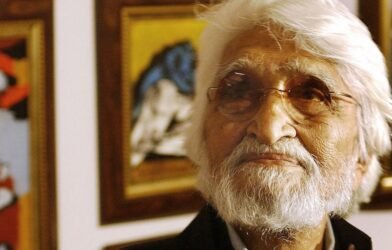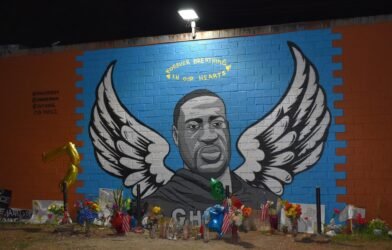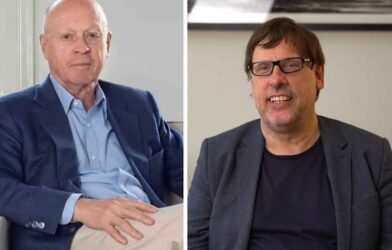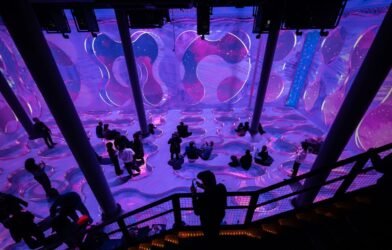Art scarcely exists in isolation, rather it is framed in the context of the world around it. From the ‘60s counterculture movement that led to the end of mass censorship in film, to the COVID-19 pandemic sparking an era of subdued and introspective music, artistic media adapts to the cultural sensibilities of the present. The UC San Diego visual arts department’s Master of Fine Arts student exhibition is no different, with our current technology-driven landscape serving as a potential message for the future.
I had the pleasure of attending their Preview Exhibition, which opened on Jan. 9 and is an opportunity for the graduating class to present their work before their solo thesis shows. This year’s incarnation is titled, “I am sending you love from the future.” The exhibition showcases artwork collectively described by curatorial advisor Irene Georgia Tsatos as being “in a perpetual state of transition, always becoming something else as it is regarded by another.” The preview show will run in Mandeville Art Gallery until Feb. 8 and is accessible to the public during the gallery’s regular operating hours; each artist’s solo thesis exhibition will take place throughout the Spring Quarter.
I found that each artist’s interpretation of the theme captured a unique perspective using a variety of creative mediums to explore social issues. Whether depicting one’s personal family struggles or referencing a broader political atmosphere, all seven featured artists’ voices shone through.
Alongside an informational pamphlet given to attendees, each artist briefly explained their work in a guided tour of the gallery. As I walked through the exhibition, each piece held my attention as I was drawn to the complex story each artist was telling.
A personal standout for me was Cuyler Ballenger’s short film, which combined documentary and narrative-style filmmaking. “I make films that take up specifics of my family history in order to discuss broader, contemporary truths,” Ballenger wrote in his statement. “My work often addresses painful and challenging histories. I therefore work closely with my family — as collaborators and guides, actors, and crew.” I particularly enjoyed the raw emotional aspect of the film; the presence of diverse human emotions helped convey how close this topic was to Ballenger’s heart.
Another work I greatly enjoyed was Nykelle DeVivo’s multimedia piece. DeVivo relied on their personal experiences with violent police interactions and their maternal lineage of channelers to bridge the physical world with their ancestors. I found the use of contrasting colors and bold lines a masterful way of expressing DeVivo’s sentiment by sending a message of rebellion.
The exhibit also featured three pieces by Maddie Butler, whose interdisciplinary style was exemplified by blending objective, scientific elements with her more subjective, artistic mediums. Butler enjoys taking apart technologies and shaping her projects “using highly tactile and labor-intensive processes, re-introducing touch to the disembodied.” One of Butler’s pieces, a sewn tapestry of magnifying glass lenses called “Lighthouse,” immediately caught my eye while walking through the gallery — its large size and bright nature made it feel like an emblem of the exhibition as a whole.
Two pieces that emotionally resonated with me were “tending to/ward” by Coralys Carter and “Flower without a name, Now I know your name” by Olivia Kayang.
Carter’s preferred materials for her pieces were wool, wood, synthetic and real hair, nylon monofilament, and steel. “My material-based process/ing coexists with a research practice focused on literature, myth, craft, poetry, history, religion, and family lore,” Carter wrote in her statement. By focusing on loom and weaving over the course of several years, Carter depicts a tale of intimacy and memory that made me ponder on how my interconnected family histories evolved over time.
Kayang centered her piece around the idea of “knowing without knowing.” She traced Eastern African flowers that were renamed after the German occupation in order to symbolize this concept and reflect on the dichotomy of “power between who’s making and who’s looking.” Through digital print panels, Kayang expertly set up a tale of mystery, allowing patrons to connect the complicated history of our world with the intriguing design of her piece.
The other artists in the exhibition were photographer Moe Penders, whose intersectional identities inspired them to tell “lots of stories with lots of chaos,” and painter John Singletary, who framed his piece around traditional folktales and chose to combine his thesis exhibition with Ballenger.
The prominence of melding societal climates and art has increased in recent years, especially with the rise of AI. As we continue to live in a rapidly evolving world, it is crucial to hold in-depth conversations around how new technological advances may affect our artistic culture. This year’s cohort of visual arts MFA students do a brilliant job of exploring how this intersection might continue to develop in the future, adapting to our rapidly changing technological climate and making art to reflect it.
Each artist’s personal interpretation of the theme gave me the chance to contemplate my own future through art, and I feel privileged that this year’s MFA exhibition allowed me to do so.










